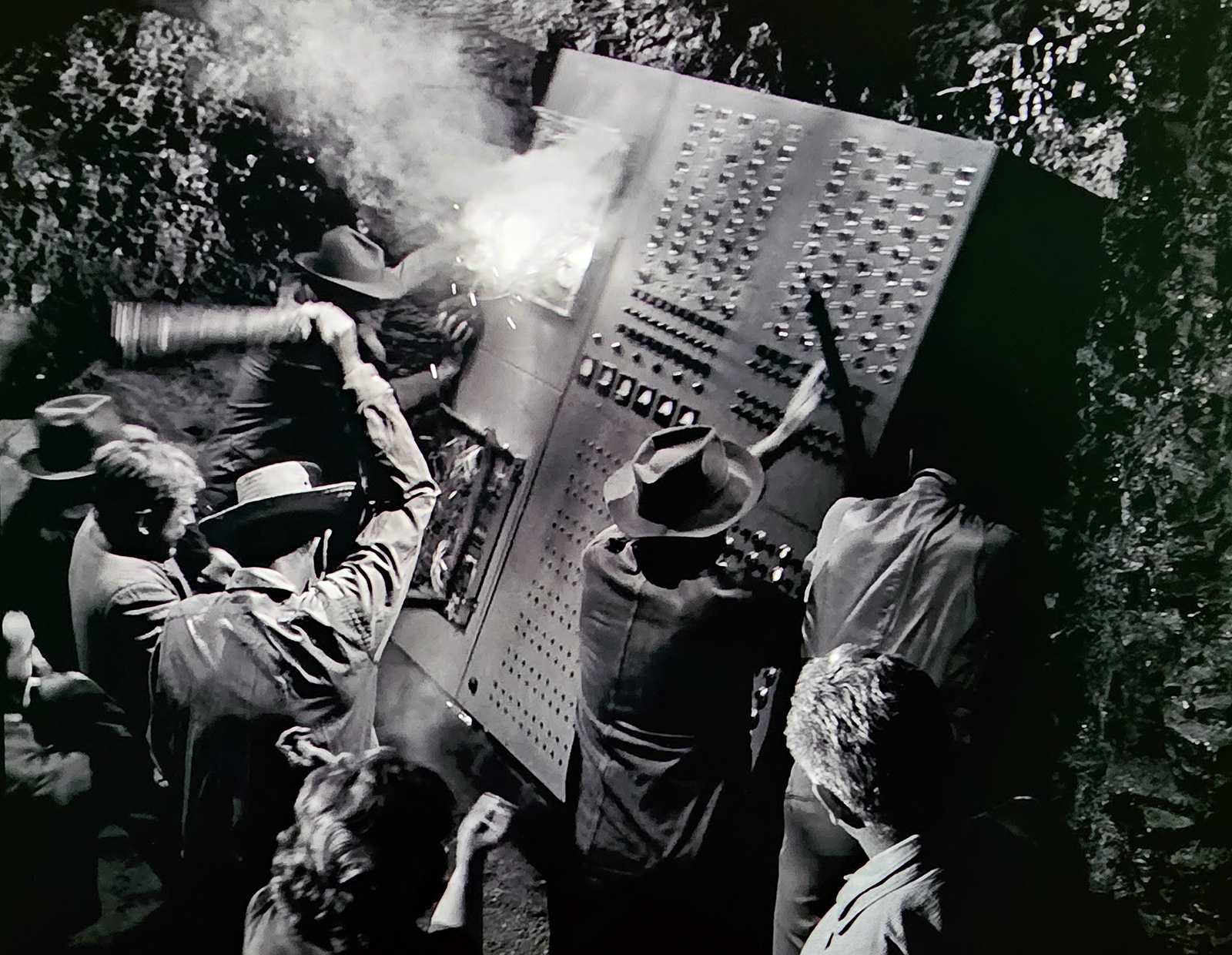Let's Reboot the Semantic Web with Alternate Realities
 djradon
djradon
"Friends, Romans, Farm Animals! We are now going up to the cave and check your favorite recluse. We're gonna bring him out in the sunshine and get a good look at him. And then we're gonna decide if he's worthwhile keeping alive."
-Major French, The Twilight Zone: The Old Man in the Cave (s05e07)
Greetings!
Welcome to my developer journal. I've been wanting to try learning in public and I hope this thing will boost my motivation, improve my writing, and put a finer point on some of my ideas. I'm also looking to make connections that could lead to collaboration. So here we are.
Spoiler Alert: It's a Machine
In the eponymous Twilight Zone episode from 1959, the old man in the cave is secretly a computer that keeps the local townsfolk alive by giving them the information they need (through an intermediary, their leader Goldsmith) to survive in a radioactive, post-apocalyptic world. They end up destroying the computer in the name of freedom, and then everyone except Goldsmith dies of radiation poisoning.
It's a story about secular faith and a nice example of the Benevolent AI trope.
In the context of this developer journal, the Old Man is a metaphor for synthetic intelligence and how we can use digital tools and digitized information to help humanity.
My Mission: A Blossoming of Alternate Realities
I'm on a mission to help people build, deconstruct, remix, and engage with the cultural multiverse through computer-assisted roleplay, interactive drama, and applied ontology.
The dream: playable alternate realities that draw on our collective cultural history and inspire our engagement. Anyone can enjoy these realities, even the non-technical can create them, and the overall experience can easily be meaningful and immersive. It might look like a drama-filled version of the metaverse, although I do not love that term.
But it could also look like improv theater or pen-and-paper roleplaying, perhaps with software standing by inobtrusively, documenting and ready to assist.
It'll be made possible by a corresponding, new-ish art form. Call it digital adventure production, roleplay experience curation, or the electric magic store. It will weave together aspects of film, video games, immersive theatre, and role-playing. You can think of it as the spiritual successor of today's virtual tabletops.
In additional to imagination, artistry, production skills, and some supporting software, this dream requires distributed, interoperable, and well-defined data. Which just happens to be the vision of the Semantic Web.
So in addition to my main mission to make this dream a reality, I have a technical side-quest to reboot the Semantic Web.
Making the Semantic Web Usable
As I mentioned, the vision of the Semantic Web is simple: distributed, interoperable, and well-defined data.
The threads of the Semantic Web are RDF statements composed of a subject, a predicate, and an object. The form is beautiful in its simplicity. For example:
:the-old-man-in-the-cave :helped :goldsmith .
:goldsmith :helped :the-townsfolk .
Theoretically, you can say anything with an interlinked collection of subject-predicate-object triples. It's a graph-based universal data language. But of course, the devil is in the details.
I want to heed Manu Sporny's 2014 call-to-arms: "If you want to make the Semantic Web a reality, stop making the case for it and spend your time doing something more useful, like actually making machines smarter or helping people publish data in a way that’s useful to them."
Turns out that making machines smarter was the easy part!
With the current state of the art, publishing any semantic data, let alone useful data, is hard. In a word, the most important theme for wider SW adoption is usability.
I've got some ideas for how to make data publishing free and easy for everyone. So that should help usability.
To make the data useful, we'll need to address some long-simmering issues around RDF: temporality, provenance, hypotheticals, probabilities, n-ary relationships, and multi-level theory.
Don't even get me started on the state of RDF-star.
There are also plenty of gaps around SW infrastructure and best practices that have had me searching for solutions and dreaming up my own.
In the trenches of academia, industry, open-source, and the World Wide Web Consortium, the Semantic Web has gotten bogged down. I guess we should've expected it to take a while to iron the kinks out of something as ambitious as a universal data language. Still, it's been almost 25 years!
The time is right to forge a path forward. And I'd bet the old man in the cave can help us out.
Other Likely Topics
I'm interested in and wary of AI (better termed synthetic intelligence) and how it can help people create interactive drama and virtual worlds. Things like GraphRAG and agentic systems are highly relevant.
At the moment, I'm especially interested in data modeling and how to represent things like characters, scenarios, play histories, and evolving worlds.
In the near term, I'm hoping to start developing some open upper-level and meta-conceptualizations, i.e., ontologies, and weave together some publishing infrastructure. After that, I aim to start making software that can use these ontologies to support alternate realities.
I enjoy astronaut architecture but want to actually build stuff too. So I intend to touch on relevant topics in data science and software development including visualization, home-cooked software, and geographic information systems.
Next Steps
If you might be interested in the less-technical aspects of my mission, or story-telling and the digital humanities in general, check out my other blog, Carpe Noctem.
As I mentioned, I'm looking to make connections that could lead to collaboration. If our interests overlap, please reach out!
Now, let's go pull the old man out of his cave and have a good look.
Subscribe to my newsletter
Read articles from djradon directly inside your inbox. Subscribe to the newsletter, and don't miss out.
Written by
